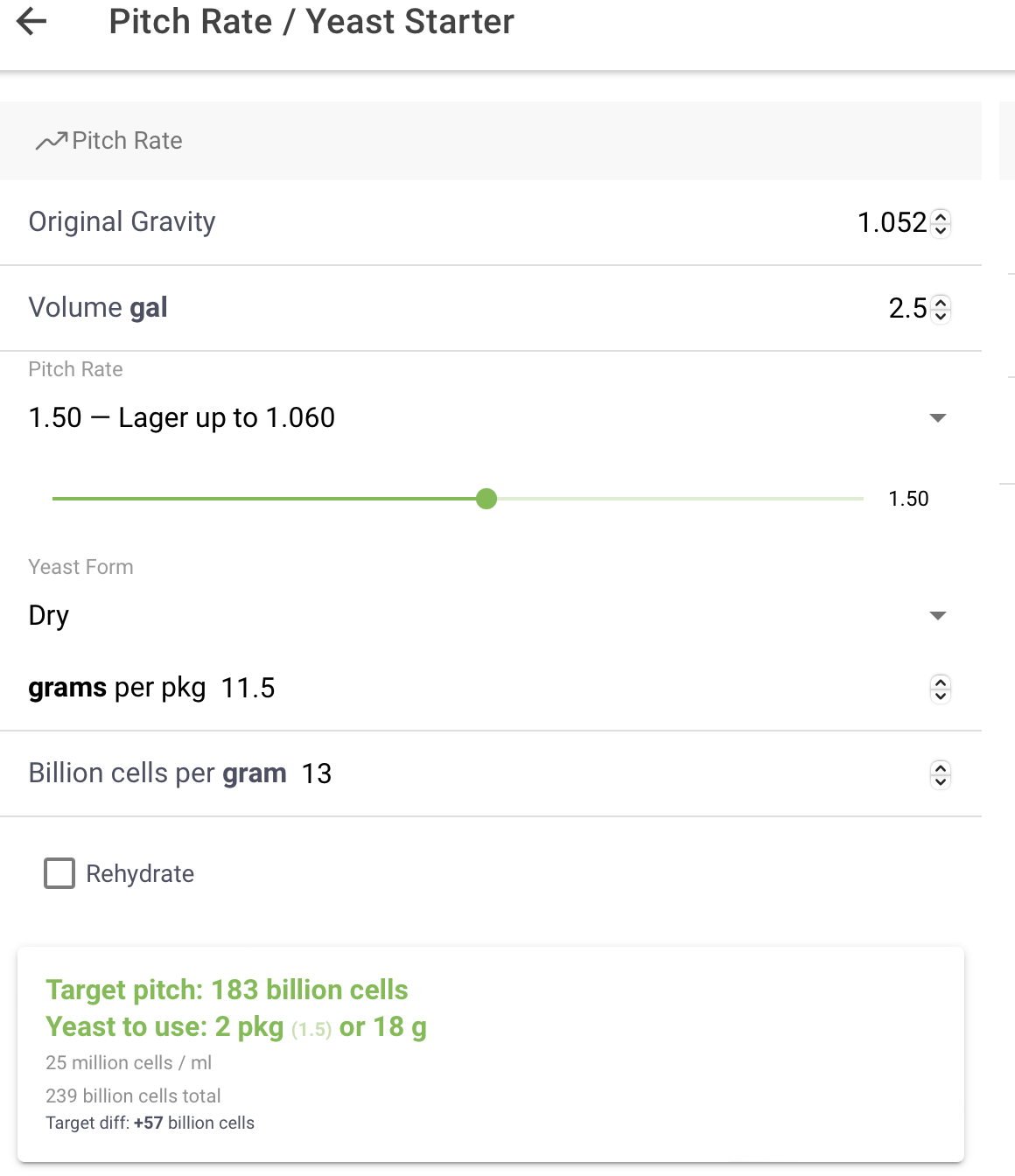NSMikeD
Well-Known Member
I usually brew 2.5 gallon ales with dry yeast with no issues. This week I brewed a Mexican Dark Lager (Negra Modelo clone) with Saflager 34/70 at 55°. The OG was 1.052. I never gave much thought to pitching a single 11.5g packet rehydrated to my brews even though I knew it was likely overpitched. I alway assumed those packets were made for 5 gallon average ABV beers.
So this weekend, it was late and instead of rehydrating, I pitched the 34/70 straight to the cooled wort thinking It was more than enough. It looks active and I had to release the spundling value twice to ease back the pressure under 4 psi. I am not looking to really pressure ferment, just didn't want to hook up a blow off tube.
I've been thinking about trying out liquid yeast for a change of pace, and so today I played with the Brewfather yeast tool. So to test drive and learn the tool I plugged in my Negra Modelo Clone. Holy smokes, if I am suing it correctly, it's saying I way under pitched:

An I understanding this correctly that for a 2.5 gallon 1.052 lager that I should have picked 18g (1.5 packaged) of non-rehydrated dry Saflager 34/70 to target 183 billion cels? Can this mean that for a standard 5 gal batch, you would need 3 envelops of the stuff?
So this weekend, it was late and instead of rehydrating, I pitched the 34/70 straight to the cooled wort thinking It was more than enough. It looks active and I had to release the spundling value twice to ease back the pressure under 4 psi. I am not looking to really pressure ferment, just didn't want to hook up a blow off tube.
I've been thinking about trying out liquid yeast for a change of pace, and so today I played with the Brewfather yeast tool. So to test drive and learn the tool I plugged in my Negra Modelo Clone. Holy smokes, if I am suing it correctly, it's saying I way under pitched:

An I understanding this correctly that for a 2.5 gallon 1.052 lager that I should have picked 18g (1.5 packaged) of non-rehydrated dry Saflager 34/70 to target 183 billion cels? Can this mean that for a standard 5 gal batch, you would need 3 envelops of the stuff?








![Craft A Brew - Safale S-04 Dry Yeast - Fermentis - English Ale Dry Yeast - For English and American Ales and Hard Apple Ciders - Ingredients for Home Brewing - Beer Making Supplies - [1 Pack]](https://m.media-amazon.com/images/I/41fVGNh6JfL._SL500_.jpg)
















































